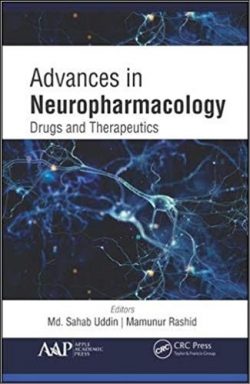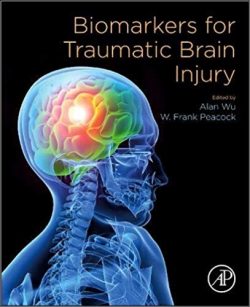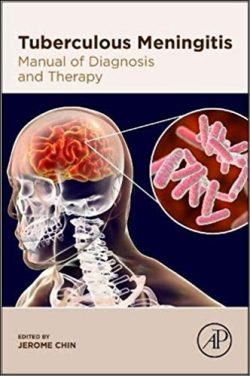Translational Neuroscience offers a far-reaching and insightful series of perspectives on the effort to bring potentially revolutionary new classes of therapies to the clinic, thereby transforming the treatment of human nervous system disorders. Great advances in the fields of basic neuroscience, molecular biology, genomics, gene therapy, cell therapy, stem cell biology, information technology, neuro devices, rehabilitation and others over the last 20 years have generated unprecedented opportunities to treat heretofore untreatable disorders of the nervous system. This book provides a wide-ranging yet detailed sample of many of these efforts, together with the methods for pursuing clinical translation and assessing clinical outcomes. Among the topics covered are Alzheimer’s disease, Parkinson’s disease, stroke, multiple sclerosis, epilepsy, motor neuron disease, pain, inborn errors of metabolism, brain tumors, spinal cord injury, neuroprosthetics, rehabilitation and clinical trial design/consideration.
Translational Neuroscience is aimed at basic neuroscientists, translational neuroscientists and clinicians who seek to gain a perspective on the nature and promise of translational therapies in the current era. Both students and established professionals will benefit from the content.
Chapter 1 – Introduction – Mark H. Tuszynski
Section 1: Molecular Approaches
Chapter 2 – Gene Therapy of CNS Disorders using Recombinant AAV vectors – Giridhar Murlidharan, R. Jude Samulski and Aravind Asokan
Chapter 3 – NGF and BDNF Gene Therapy for Alzheimer’s Disease – Alan H. Nagahara and Mark H. Tuszynski
Chapter 4 – GDNF and AADC Gene Therapy for Parkinson’s Disease – Krystof Bankiewicz, Waldy San Sebastian, Lluis Samaranch and John Forsayeth
Chapter 5 – GAD Gene Therapy for Parkinson’s Disease – Michael G. Kaplitt and Matthew J. During
Chapter 6 – Anti-sense Oligonucleotides
for Amyotrophic Lateral Sclerosis – Wade K. Self and Timothy M. Miller
Chapter 7 – Gene therapy for Inborn Errors of Metabolism: Batten Disease – Dolan Sondhi, Ronald G. Crystal and Stephen M. Kaminsky
Chapter 8 – Gene Therapy for Spinal Cord Injury – Ioana Goganau and Armin Blesch
Chapter 9 – Gene Therapy for Epilepsy – Thomas J. McCown
Chapter 10 – Gene therapy for Pain – Darren Wolfe, David Krisky, James Goss, James Wechuck, Marina Mata and David J. Fink
Section 2: Cellular Approaches
Chapter 11 – Stem Cells for Parkinson’s Disease – Andrés Bratt-Leal and Jeanne F. Loring
quot;serif””>Chapter 12 – Could Stem Cells be used to treat or model Alzheimer’s Disease? – Edsel M. Abud and Mathew Blurton-Jones
Chapter 13 – Stem cells for Amyotrophic Late
ral Sclerosis – Anthony Donsante, Lindsey Nicole Urquia and Nicholas M. Boulis
Chapter 14 – Stem cells for Multiple Sclerosis – Pamela Sarkar and Neil Scolding
Chapter 15 – Cell Therapy for Pediatric Disorders of Glia – Joana M. Osorio and Steven A. Goldman
Chapter 16 – Neural Stem Cells for Spinal Cord Injury – Paul Lu, Ruhel Amhad
le=”mso-bidi-font-size:12.0pt;font-family:”Times New Roman”,”serif””> and Mark H. Tuszynski
Chapter 17 – Marrow-derived Mesenchymal Stromal Cells in the Treatment of Stroke – Steve C. Cramer
Chapter 18 – Glioma Stem Cells – Regina Teresa Martuscello, Brent Reynolds and Santosh Kesari
Section 3: Novel Pharmacological Approaches
Chapter 19 – Discovery of Potent Gamma Secretase Modulators for the Treatment of Alzheimer’s Disease – Kevin D. Rynearson, Rudolph E. Tanzi and Steven L. Wagner
Chapter 20 – Blocking the Nogo-A signalling pathway to promote regeneration and pla
sticity after spinal cord injury and stroke –
tachment: initial; background-size: initial; background-origin: initial; background-clip: initial; background-position: initial; background-repeat: initial;”>Anna Magdalena Guzik-Kornacka, Flóra Vajda, Martin E. Schwab
Chapter 21 – Intrinsic neuronal mechanisms in axon regeneration after spinal cord injury – Fengfeng Bei and Zhigang He
Chapter 22 – Voltage-gated ion channels as molecula
r targe
ts for
pain –
Gerald
W. Zamponi, Chongyang Han and Stephen G. Waxman
Section 4: Activity-Dependent Plasticity and Neurorehabilitation
Chapter 23 – Rehabilitation-dependent neural plasticity after Spinal Cord Injury –
ot;,”serif”; mso-ansi-language:DE-CH”>Volker Dietz, Lea Awai, Armin Curt and Grégoire Courtine
Chapter 24 – Neural Prostheses for Neurotrauma – Arthur Prochazka
Chapter 25 – Why is Fu
nctional Electrical Stimulation Therapy Capable of Restoring Motor Function Following Severe Injury to the Central Nervous System? – Mary K. Nagai, Cesar Marquez-Chin and Milos R. Popovic
Chapter 26 – Deep Brain Stimulation for Neuropsychiatric Disorders – Ausaf A. Bari, Nicolas Kon Kam King, Nir Lipsman and Andres M. Lozano
Chapter 27 – Novel Interventions for Stroke: Nervous System Cooling – Patrick D. Lyden, Jessica Lamb and Padmesh S. Rajput
Chapter 28 – Rehabilitation Strategies For Restorative Approaches After Stroke and Neurotrauma – Bruce H. Dobkin
al”>Chapter 29 – Bridging the Chasm Between Scientific Discovery and a Pivotal Clinical Trial for a CNS Disorder: A Checklist – John D. Steeves
Chapter 30 – Conclusion – Mark H. Tuszynski
Mark H. Tuszynski, MD, PhD, is a professor of neurosciences and founding director of the Translational Neuroscience Institute at the University of California – San Diego, and a neurologist at the Veterans Administration Medical Center in La Jolla, California. He received his undergraduate and MD degrees from the University of Minnesota in Minneapolis, completed neurology residency at Cornell University Medical Center / The New York Hospital, and subsequently received a PhD in neuroscience from the University of California – San Diego. Dr. Tuszynski studies basic and translational aspects of neurodegenerative disorders and neurotrauma, and the biological basis of learning and memory.
Translational Neuroscience offers a far-reaching and insightful series of perspectives on the effort to bring potentially revolutionary new classes of therapies to the clinic, thereby transforming the treatment of human nervous system disorders. Great advances in the fields of basic neuroscience, molecular biology, genomics, gene therapy, cell therapy, stem cell biology, information technology, neuro devices, rehabilitation and others over the last 20 years have generated unprecedented opportunities to treat heretofore untreatable disorders of the nervous system. This book provides a wide-ranging yet detailed sample of many of these efforts, together with the methods for pursuing clinical translation and assessing clinical outcomes. Among the topics covered are Alzheimer’s disease, Parkinson’s disease, stroke, multiple sclerosis, epilepsy, motor neuron disease, pain, inborn errors of metabolism, brain tumors, spinal cord injury, neuroprosthetics, rehabilitation and clinical trial design/consideration.
Translational Neuroscience is aimed at basic neuroscientists, translational neuroscientists and clinicians who seek to gain a perspective on the nature and promise of translational therapies in the current era. Both students and established professionals will benefit from the content.
Offers a far-reaching and insightful series of perspectives on the effort to bring potentially revolutionary new classes of therapies to the clinic
Provides neuroscientists, translational neuroscientists and clinicians a perspective on the nature and promise of translational therapies in the current era
Features a wide-ranging yet detailed sample of progress made in the treatment of heretofore untreatable nervous system disorders





